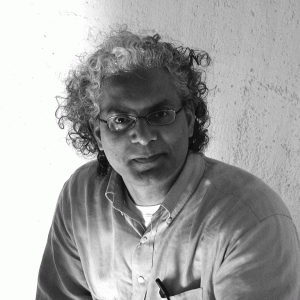A few words about me. My name is Raj Karamchedu. I wrote this book. Earlier in 2012 I ended my role as Chief Operating Officer and VP of Product Marketing at Legend Silicon.
If you don’t know Legend, then you are not alone, not many in the U.S. know of it. But let me say that what Legend accomplished was a big deal.
Think television. Remember those roof-top antennas? Do you know in the U.S. today you can receive HDTV, for free, using this roof-top antenna? It is true.
Now think China. Legend co-invented the standard for the China digital terrestrial television broadcast. And the China government made it into an official, China national standard way back in 2006.
We made semiconductor chips for this China national television standard. I joined Legend in 2007 as a product marketing guy. From 2007 through early 2012 it was nothing but a most exciting ride in my professional career. Certainly feeling thankful for the opportunity.
Why This Book?
This book emerged out of my “What lessons you learned?” exercise. I hope it doesn’t come across as a “You’ve got a problem? I got a solution,” book. Because it’s not meant to be that way.
When you read it I hope you get your money’s worth.
My Professional Background
My entire professional life, from 1994, all 18 years of it, I built up in Silicon Valley bay area. Started off as a signal processing and digital communication design engineer at Alta Group in Cadence.
After six-odd years there, bitten by the startup bug, and motivated by one of those ten-week evening courses I took at Stanford Continuing Education on how to finance a startup, I resigned my job at Cadence and set out to “start a company.”
Frankly, I didn’t really know what I was doing.
Coming out into the startup world, with just an engineering design background, I didn’t even know what a marketing plan looked like.
But gradually, over the period of the following 14 months I talked to anyone who listened. Even to my mailman. Attended a few startup bootcamps. Interviewed for market research analyst positions, just to learn what they do. Hired one or two business development people (one of them took my money and disappeared, seriously).
Then got a few VCs in the Silicon Valley to listen to my pitch.
They listened, and to their credit, they didn’t laugh. They told me where I needed to focus on. They told me why my business idea was good, but it would take a significant cooperation from designers and manufacturers to pull this off. That was a barrier, they said. Barrier to me.
In any case, by the December of 2000 I ran out of all my savings, and decided to stop my startup effort. One lesson I learned still anchors me in my professional life. That lesson is to always ask the question: “What problem are you solving?”
And another realization. That people always try to help you. That’s been my experience. Even when they weren’t in a position to actually help me, they were gracious in at least listening to me. That meant a world to me. Still does.
Then I decided that the only way for me to continue to prepare myself is to get into product marketing role. That’s when I changed my career.
In February 2001 I got a product marketing job at Chameleon Systems. Then onward to Systemonic, Philips Semiconductors and Silicon Image. Then Legend Silicon.
In 2005, spurred by a variety of factors – a tragedy in the family, a crescendo of the various changes occurring in my life, changes from big-company to startup, back to big-company, from engineering-to-marketing – I gave in to an impulse and wrote my first book, It’s Not About the Technology: Developing the Craft of Thinking for a High Technology Corporation.
Nearly fell out of my chair when the publisher looked at my proposal and agreed to publish that book.
Good, now I know how to publish a book, I thought.
But over subsequent years, when I sought to get another book published, it took too long and the process seemed so dysfunctional, I wanted to do nothing with it. I wanted something that moved faster, a process that I can control better.
So now, in my free time, I run a small publishing company called Saaranga Books.
If you want to contact me, please go on over to this page.
